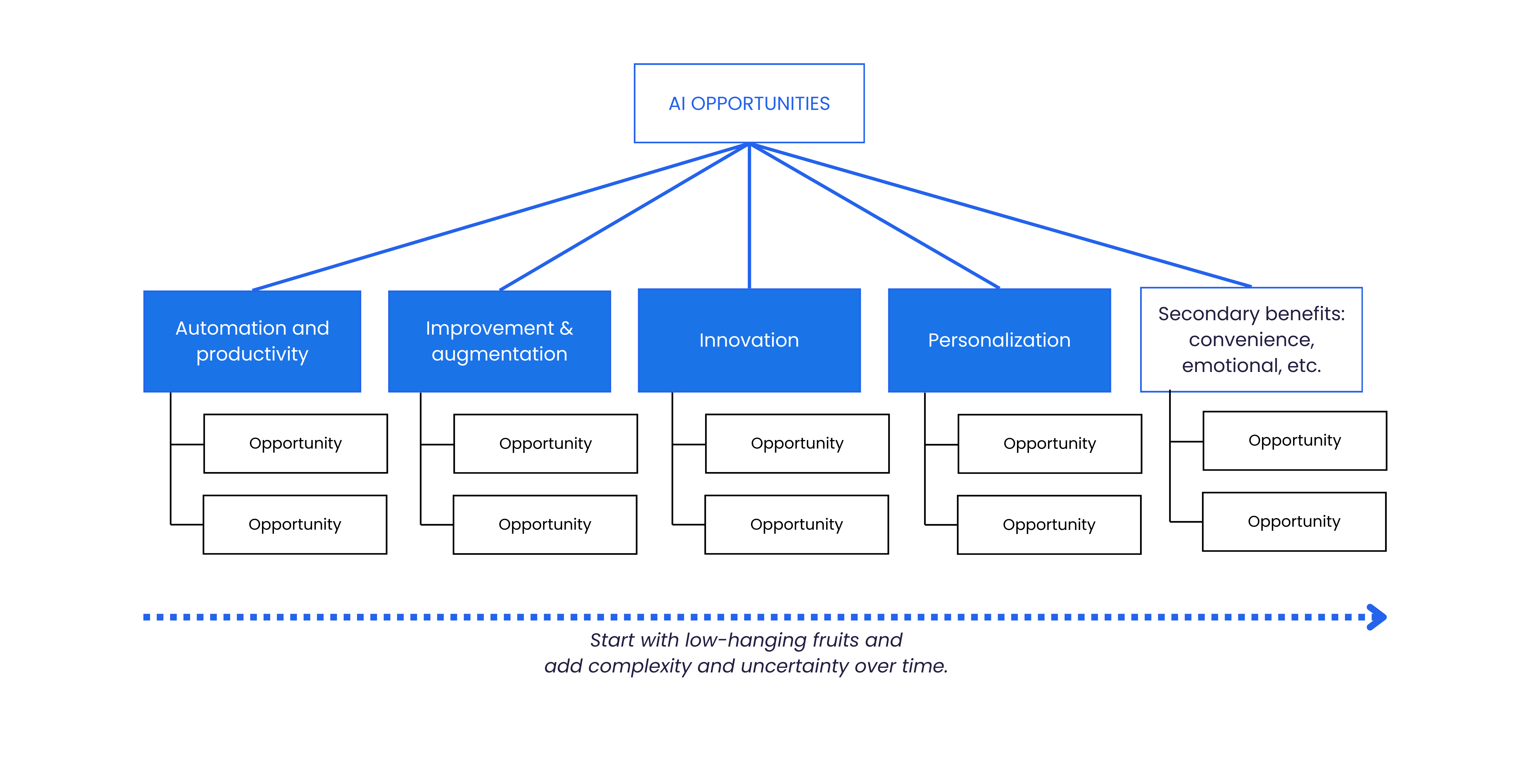AI Opportunity Tree
The AI Opportunity Tree allows you to ideate AI use cases. It is structured around the core benefits of AI, incl. automation, augmentation, innovation, and personalization. The tree structure helps teams move from broad benefits to specific, realistic AI use cases.

Principles
Start with business problems, not AI capabilities
Use divergent thinking to generate ideas, then converge with structured evaluation
AI opportunities should be specific enough to be actionable, but broad enough to evolve
Balance short-term wins with long-term strategic value
Implementation steps
1Source opportunity ideas
Collect AI ideas from customer feedback, internal knowledge, technology trends, competitive analysis, and regulatory shifts. Classify them into one of the branches of the AI Opportunity Tree.
2Shape the opportunities
Use the AI System Blueprint to create initial specifications of the opportunities. This helps ensure you consider all components needed for implementation.
3Evaluate and prioritize
Assess opportunities based on business impact, technical feasibility (data, infrastructure, models, talent), alignment with strategic goals, and expected user value. Balance quick wins to gain momentum, and long-term opportunities to build your competitive advantage.
4Iteratively define your AI strategy
Typically, opportunities get more complex, but also more transformative as you move from left to right in the tree. Follow this cadence. Also, consider spill-over effects from one use case to another to another.
5Continue updating and editing the tree
Document your opportunity landscape visually. Involve key stakeholders to revisit your tree regularly as new market signals, technology shifts, and user insights emerge.
Anti-patterns
AI for the sake of AI: Starting with trendy AI tech rather than business problems or user needs
Scattered initiatives: Launching multiple disconnected AI projects without thinking about your AI strategy
Static opportunity assessment: Failing to revisit and update the opportunity landscape as technologies, markets, and organizational capabilities evolve
Resources
Chapter 2: Discovering AI Opportunities from The Art of AI Product Development by Dr. Janna Lipenkova
Article AI Ideation Made Simple